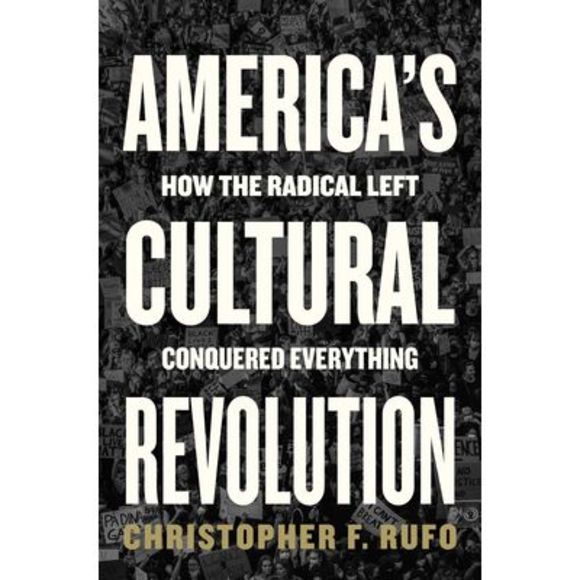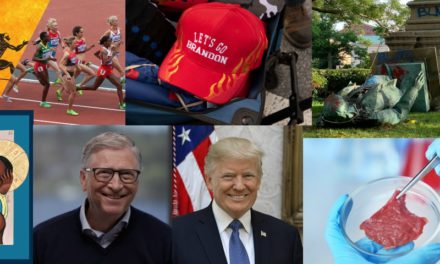Fifty-plus years ago, National Review decided to launch a bi-weekly newsletter entitled Combat, the purpose of which was to follow the nefarious (as indeed they were) activities of the New Left. I subscribed and soon began reading about a cast of committed Marxists who were mostly unknown to me: Angela Davis, Stokely Carmichael, Eldridge Cleaver, Bernadette Dorn, Bill Ayres, Huey Newton, H. Rap Brown. Revolutionaries to a man, they were soon front-page or evening-TV news. Their goal, hardly a secret, was the violent overthrow of the “systemically” racist (yes, they used that expression), oppressive, paternalistic, sexist, and capitalist United States. Bourgeois institutions, such as prisons, courts, and representative chambers had to be abolished, history books, re-written, and incorrigibles liquidated.
Although written as straightforward reportage, the bald facts Combat rehearsed tended to alarm and sober up the reader. Would revolution really come? But after the police station bombings, bank robberies, and occasional murders failed to produce the uprising its architects optimistically yearned for, the movement seemed to die, and Combat ceased publication.
Today, I find myself wondering why National Review shuttered the newsletter. If you want to know why, you need look no further than Christopher F. Rufo’s America’s Cultural Revolution: How the Radical Left Conquered Everything (Broadside Books). A senior fellow at the Manhattan Institute, Rufo chronicles the “long march” (a phrase borrowed from Chairman Mao Zedong) of the radical, revolutionary left over a half century or more; the march has been as stunning and depressing as it has been successful.
“Everything” may strike readers as an exaggeration, and, of course, to a degree it is. But everything political, institutional, and cultural by now can hardly escape the icy touch of the radicals. When and how did it begin?
To understand the origin of the Marxian long march, one must begin with the critical theorists, primarily with the German Herbert Marcuse. Jewish in origin but not in practice, Marcuse in his youth progressed academically, discovering first socialism and then Marxism along the way. Eventually, he found his niche in Frankfurt’s Institute for Social Research (originally the Karl Marx Institute) and, had fortune smiled on us, might have stayed there. But Hitler’s rise put Jewish intellectuals in flight, and eventually Marcuse found his place in the American academic world: Columbia, Harvard, Brandeis, and, finally, the University of California, San Diego.
Through such works as A Critique of Pure Tolerance, One-Dimensional Man, and An Essay on Liberation he became the darling of the radical Left, not only in the U.S. but worldwide. As Rufo observes, “Students in Rome, Paris, Frankfurt, and Berlin carried banners with the slogan ‘Marx, Mao, Marcuse!’ emblazoned in enormous block letters” (10). Never the mere theorist, Marcuse called explicitly for revolution, developing over time “four key strategies,” namely, the “revolt of the affluent white intelligentsia, the radicalization of the black ‘ghetto population,’ the capture of public institutions, and the cultural repression of the opposition” (11). Despite the failure of the New Left’s late sixties campaign of terror and Marcuse’s disappointment at the kids’ descent into drug use and hedonism, his revolutionary prescription worked all too well. Certainly, some of his students, Angela Davis in particular, would see to that.
In Davis, radical blacks found a natural leader. An intelligent and committed Marxist from her teens forward, she dedicated her energies to the overthrow of American society. Soon she was joined by several very different but equally convinced Marxist blacks: Newton, Cleaver, Brown, Bobby Hutton, and the imprisoned George Jackson (whose lover she may have been before she came out in 1997 as a lesbian). A botched prison break meant to free Jackson ended in Davis’ flight and arrest. But in spite of strong evidence of her complicity in the plot, her lawyers played the race card, and the compliant jury exonerated her.
The end of the revolutionary attempts of the left’s campaign to effectually abolish America did not destroy the crusade. Instead, they moved forward into an ostensibly peaceful but more insidious phase of commandeering the organs of intellectual, business, and political power: the schools (from kindergarten up), corporations, the media, and city councils. Intimidation and shaming became the tools of choice; no white, after all, wanted to be called “racist.” But as leftist theory made plain, “whiteness” inescapably meant racist. And as long as white guilt could be played upon, the movement’s steady advance remained guaranteed.
Davis’ agenda to “destabilize, deconstruct, and demolish oppressive systems” (115), meaning, in Rufo’s words, “prisons, policing, borders, and immigration enforcement, has been openly adopted by BLM; founders (Cullors, Garza, and Tometti) have praised Davis as their mentor. Similarly, BLM’s vision for the future social order, with a revamped family structure (LGBTQ+ friendly) and the molding of the “new man” free from the rule of law, Christianity, and traditional morality, has gained currency among professional educators and entrenched bureaucrats.
Ruffo lines up the major actors (Marcuse, Davis, Paulo Freire, Derrick Bell), organizations (Black Panthers, the Black Liberation Army, BLM), places (Portland, Seattle), and activist theories (CT, CRT, DEI) in a rewarding but exhausting read. The question must arise: Is there hope for reversing the trends that have relentlessly eroded America’s traditional and constitutional order? Ruffo thinks so. The first ally is knowledge. Comprehending the ends the radical left has sought and is currently seeking is essential. Books such as Ruffo’s, Michael Gonzalez’s BLM, Douglas Murray’s The War Against the West, Michael Walsh’s The Devil’s Pleasure Palace, and Roger Scruton’s Fools, Frauds, and Firebrands: Thinkers of the New Left are excellent places to begin.
But Ruffo’s shocking exposé by itself may provide the shock necessary to wake people from their slumber. Then it will be time to act. The long march of counterrevolution—and it likely will be long—must begin before the left’s concerted plan of societal annihilation is realized. It must begin now.














